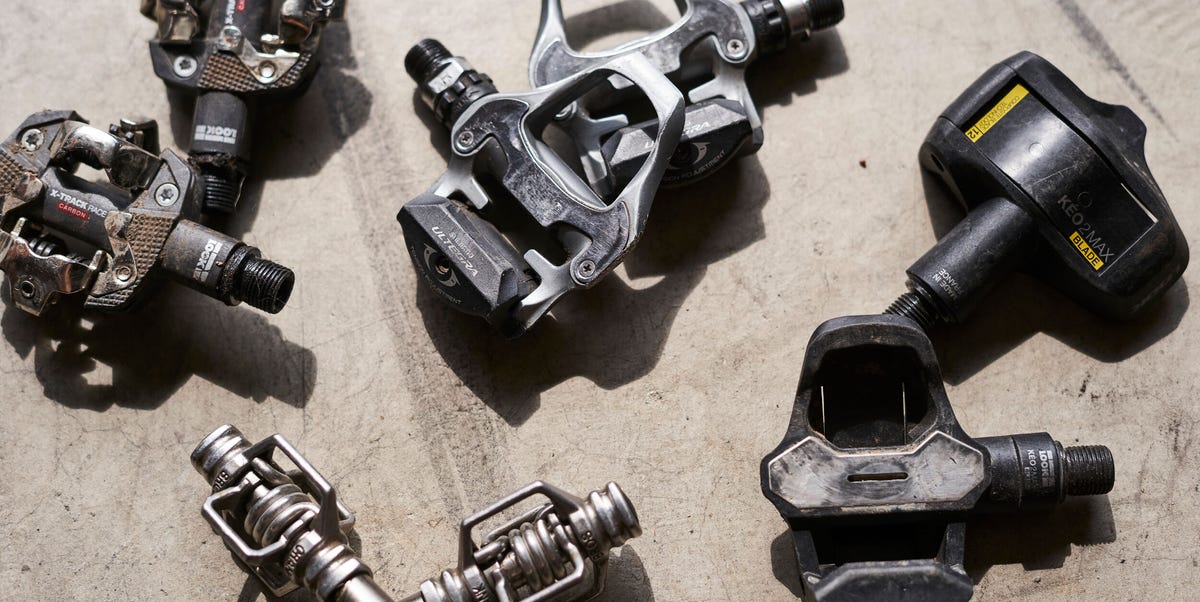
Understanding Clipless Pedals
For many beginner road, gravel, and mountain bike riders, using clipless pedals is a significant milestone. These pedals, often referred to as clip-in, click-in, or SPDs by cyclists, offer a more secure connection between the rider’s feet and the bike. Riding with clipless pedals enhances efficiency by improving power transfer and allowing riders to pull up with each pedal stroke while also pushing down, similar to traditional flat pedals.
However, choosing the right clipless pedals and shoes can be overwhelming. Manufacturers offer dozens of pedal options and hundreds of compatible shoes. This guide aims to simplify the process, helping you select the best options and confidently ride on roads or trails.
Why Are They Called Clipless?
A common question about clipless pedals is why they are called "clipless" if you clip into them. The term might seem contradictory, but it refers to an older pedal type that used toe clips and straps. Before clipless pedals became popular in the mid-1980s, riders used metal or plastic cages (clips) attached to the front of the pedals, along with leather or nylon straps to secure their feet. Road racers also used notched cleats to lock their shoes to the pedals.
Clipless pedals introduced a mechanical attachment system paired with special plastic cleats on cycling shoes. These pedals operate like ski boots and bindings, securely attaching the rider's shoes to the pedals. They disengage when the rider twists their foot, making them easier and safer than toe clips and straps. Since these pedals did not have the old-style clips, they were named "clipless."
Another frequently asked question is why new bikes are often sold without pedals. The reason is that many riders prefer specific brands of clipless pedals. It is more cost-effective for bike manufacturers not to include pedals that most buyers won't want.
Choosing the Right Pedals
Before purchasing clipless pedals, consider your riding needs. While road-specific pedals may not be ideal for all riders, gravel or mountain bike pedals could be better suited for certain terrains. Remember, it's your bike and your comfort. If you don't want to use clipless pedals, you don't have to. Many riders find flat pedals sufficient for their needs.
There are two main types of clipless pedals: single-sided and dual-sided. Single-sided pedals are typically designed for paved surfaces and have a mechanical binding on one side. Dual-sided pedals, often referred to as SPDs, offer two sides for clipping in, making them easier to engage. They are particularly beneficial for riders who need to unclip frequently or walk during their rides.
Dual-sided pedals also provide better walkability due to their design. They use 2-bolt cleats mounted on lugged-sole shoes, which offer increased traction. This makes them ideal for off-road and gravel riding. Some brands even offer hybrid pedals that combine flat and clipless features, allowing for versatility in different riding situations.
Selecting the Right Shoes
Most clipless shoes are designed for either 2-bolt or 3-bolt cleats. Ensure that the shoes you choose are compatible with the pedals you will use. Typically, 3-bolt pattern shoes are sold as road shoes, while 2-bolt interfaces are found in mountain, gravel, or commuter collections. Some shoes, especially those for indoor cycling, have both cleat patterns. Adaptors are available for attaching 2-bolt cleats to 3-bolt shoes, but it is recommended to select shoes specific to your pedal type.
When purchasing clipless shoes, consider comfort and fit. Prices range from less than $30 to over $700 for premium road shoes. Comfort is essential, as improper fit can lead to hot spots and foot pain. Try shoes on with the socks you usually wear while riding to ensure a proper fit.
Closure Methods
Popular closure systems for cycling shoes include laces, Velcro, and dials. Laces offer a classic look and are easily repairable, but adjustments cannot be made on the bike. Velcro closures are lightweight and easy to adjust, though fewer brands use full Velcro today. Dials, such as Boa systems, have become popular for their ease of adjustment while riding and microtuning capabilities.
Installation and Maintenance
Follow the manufacturer's guidelines for installing cleats and setting tension. Start with float cleats rather than fixed-position variants for better flexibility. Adjust pedal-release tension on the lower side initially, then fine-tune as needed. Practice riding on easy terrain before heading to busy roads or technical trails. Indoor trainers are great for learning the basics of clipping in and out.
Maintain your pedals and cleats by checking for wear and damage. Clean debris from mountain bike pedals after each ride and apply light lubricant to prevent rust. Replace worn cleats promptly to avoid unexpected issues.
Final Tips
Invest in quality replacement parts for your pedals and cleats, especially for plastic 3-bolt cleats, which can wear quickly. Avoid cheap imitations that may fail unexpectedly. With proper selection, installation, and maintenance, clipless pedals can enhance your cycling experience and provide a secure, efficient ride.
